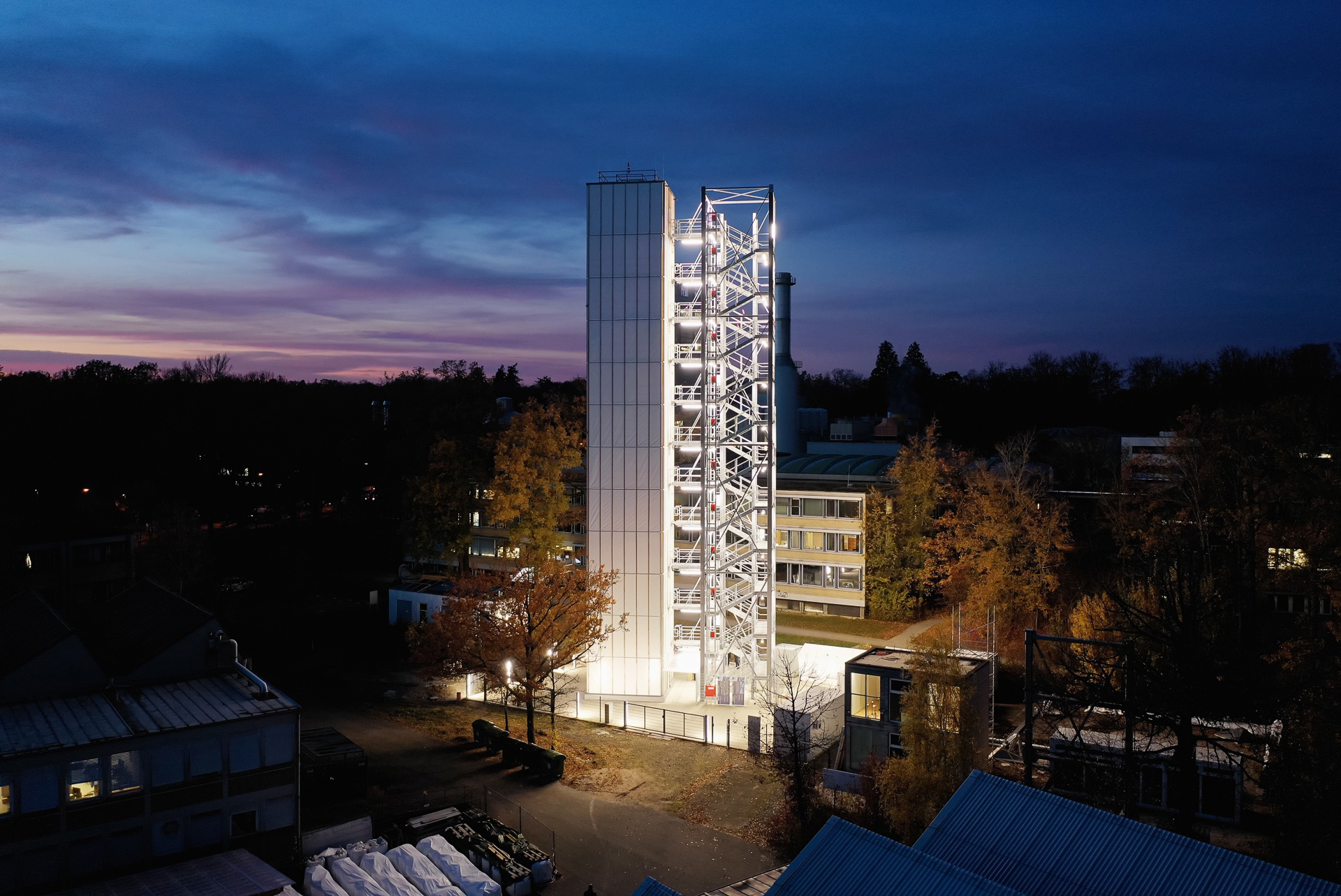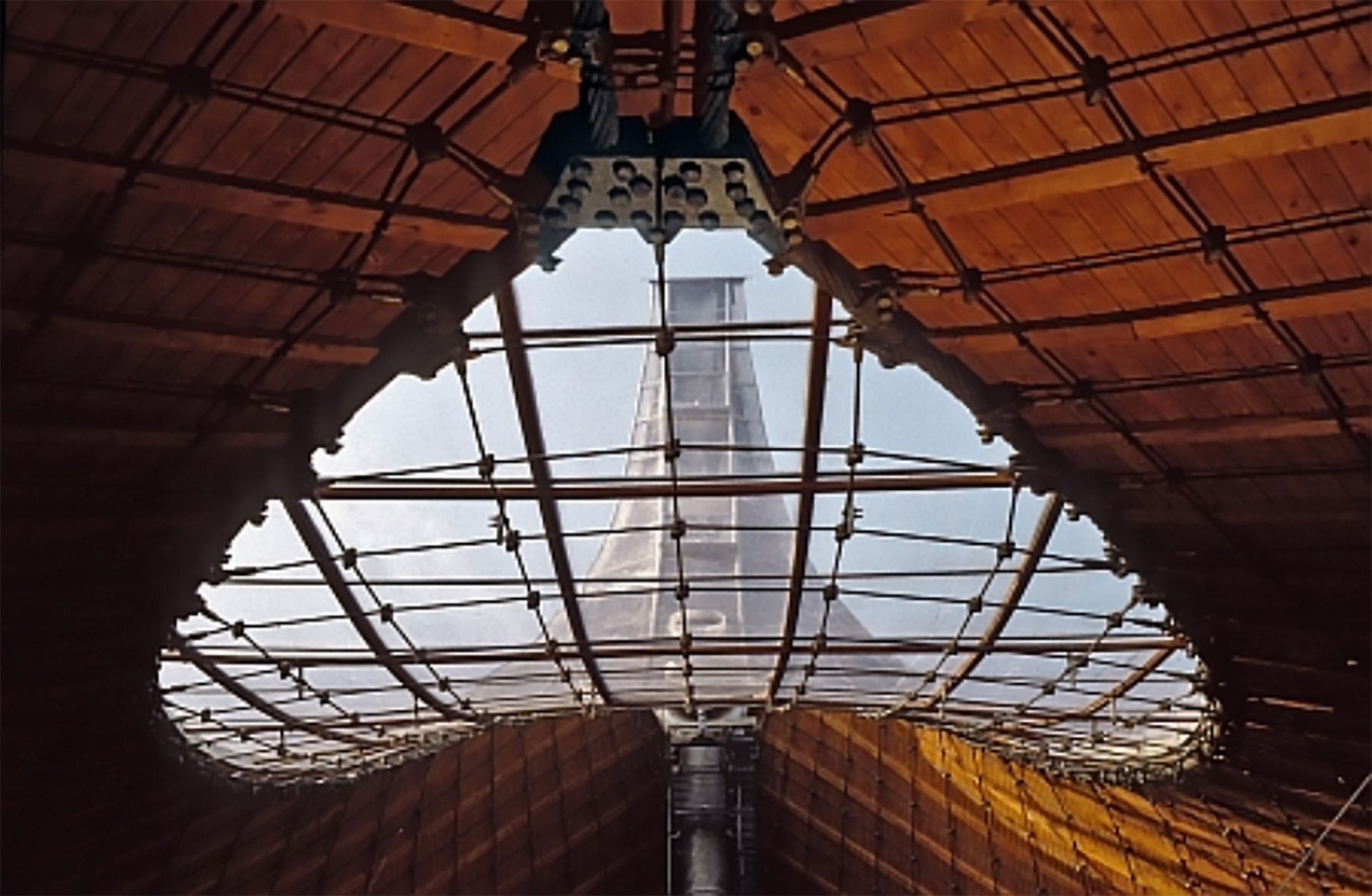Tour
Join us in our socializing tour at the Institute for Lightweight Structures and Conceptual Design (ILEK). In this activity, you will visit the demonstrator D1244 as well as the ILEK tent, learning about their design, structure, functionality and history. The director of the institute, Prof. Lucio Blandini, will greet us with a speech at 17:30 p.m. and at 18:00 p.m. we will go through the structures in a learning journey. After the tour you can stay for a while to share a drink with the other participants or take the shuttle bus back to the city center (public transport is also available near the venue, in case you’d like to stay longer).
Meeting point: between the buildings KI and KII from the University of Stuttgart, campus city center.
Transport: by shuttle bus from city center to campus Vaihingen. The same bus will take you back to the city center after the tour ends.
Date: on Wednesday, October 4, 2023 at 16:00 p.m. (after the last workshop session).
The demonstrator high-rise building, D1244
D1244 is a lightweight high-rise building specifically designed to drastically reduce its consumption of resources as well as environmental impacts. The building components are conceived in a way such that they can be separated and recycled once their service life has been exceeded. The load-bearing structure was designed as a steel frame construction stiffened by a set of cross bracings that span three floors each. As one of the unique features of the demonstrator high-rise, actuators are integrated strategically in some of the columns and cross bracings. Through controlled adjustments of the actuators, the load transfer in the structure can be manipulated and thus structural performance can be significantly improved.
Throughout the project, existing building components such as floor slabs will either be replaced by adaptive systems or equipped with newly developed actuators and sensors. In order to best capture the behaviour of the load-bearing structure with little influence from non-structural elements, a separate staircase tower has been constructed for vertical access as well as cable routing. The main tower and the staircase tower are separated by a distance of 2.7 m.
The demonstrator high-rise is instrumented by sensors that allow real-time identification of the external disturbances. Employing a closed-loop control system, the load-bearing structure can respond to a wide range of disturbances. For an instance, if the high-rise starts to vibrate under the influence of strong winds, excessive responses can be mitigated. This way, safety and comfort requirements on vibrations can be satisfied without increasing the structure’s cross-section sizes.

Photo: René Müller Photographie, Stuttgart
The ILEK tent
About the ILEK tent (text from Manuela Brüggeboes)
- 1964 Competition for the German Pavilion in Montreal won by Rolf Gutbrot, Frei Otto and Peter Strohmeyer.
Form finding: The form originated in a tulle model and was checked after its construction by means of a soap skin model. For design reasons (e.g. connection details, material thickness), the shape deviates from the minimum surface at the high point, since the surface is introduced tangentially at the high point. In order to take dimensions from the model, the model and ‚original‘ must be geometrically similar. This depends on the prestress, so there must be a static-elastic similarity of these two.
- 1966 Since computer simulations and real reference structures were not available, an experimental building (460 sqm – 1/17th of the area of the Expo Pavilion) was erected on the grounds of the University of Stuttgart, about 2 km from the present location. This involved only the rope net with a mesh size of 50 x 50 cm made of 12 mm stranded spiral ropes completely prefabricated. Extensive tests on vibration behavior, deformation behavior and the like were carried out. It was also used to test assembly and detailing. The assembly was adopted for Montreal. Some of the details had to be further developed.
- 1967 Expo Montreal
- 1968 Due to the decision to move the IL from the city center to Vahingen, the test building is moved to its present location. This process takes one day. The perimeter cables are hooked into the prepared foundations and the net was prestressed by erecting the pylon and tightening the guy points. The vertical glass frames of the facade are prestressed to minimize the deformation of the edge rope for the glass panes. The pylon (d=42cm) is supported at the bottom bearing in a ’sand pot‘. The entire interior was designed by Frei Otto especially for this building. The roof was covered with Eternit shingles. Underneath is thermal insulation made of mineral wool.
- 1990 One of Frei Otto’s few permanently used tent buildings becomes one of the youngest listed buildings in BW.
- 1993 Extensive renovation. Roofing, skylight, all-round glazing, electrical and sanitary installations, heating and flooring are renewed.

Photo: ILEK









